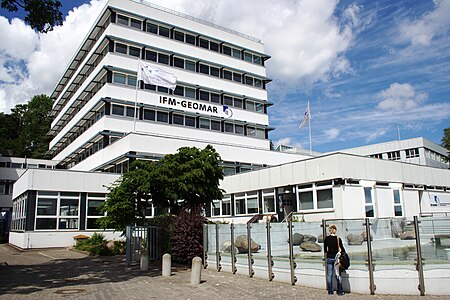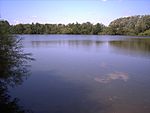GEOMAR Helmholtz Centre for Ocean Research Kiel

The GEOMAR - Helmholtz Centre for Ocean Research Kiel (GEOMAR), formerly known as the Leibniz Institute of Marine Sciences (German: Leibniz-Institut für Meereswissenschaften, IFM-GEOMAR), is a research institute in Kiel, Germany. It was formed in 2004 by merging the Institute for Marine Science (Institut für Meereskunde Kiel, (IFM)) with the Research Center for Marine Geosciences (GEOMAR) and is co-funded by both federal and provincial governments. It was a member of the Leibniz Association until 2012 and is coordinator of the FishBase Consortium. Since 2012 it is member of the Helmholtz Association and named GEOMAR - Helmholtz Centre for Ocean Research Kiel. The institute operates worldwide in all ocean basins, specialising in climate dynamics, marine ecology and biogeochemistry, and ocean floor dynamics and circulation. GEOMAR offers degree courses in affiliation with the University of Kiel, and operates the Kiel Aquarium and the Lithothek, a repository for split sediment core samples.
Excerpt from the Wikipedia article GEOMAR Helmholtz Centre for Ocean Research Kiel (License: CC BY-SA 3.0, Authors, Images).GEOMAR Helmholtz Centre for Ocean Research Kiel
Am Seefischmarkt, Kiel Wellingdorf
Geographical coordinates (GPS) Address Nearby Places Show on map
Geographical coordinates (GPS)
| Latitude | Longitude |
|---|---|
| N 54.327222222222 ° | E 10.180833333333 ° |
Address
Am Seefischmarkt
24148 Kiel, Wellingdorf
Schleswig-Holstein, Germany
Open on Google Maps










